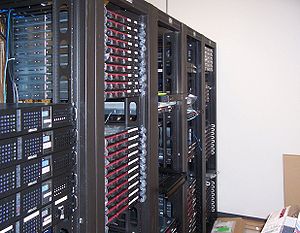Yesterday Dries Buytaert, original creator of open source content management software Drupal, wrote a blog post highlighting how open source can play a major role in enterprise SaaS. In his post, he points out to SaaS being dominated by proprietary players and talks about how open source can play a significant role in avoiding vendor lock-in.
At the same time, I think we have an opportunity to go beyond that, and to redefine the Software as a Service model based on Open Source values, almost exactly like we started doing 10+ years ago with off-the-shelf software. Almost all Software as a Service providers employ a proprietary model — they might allow you to export your data, but they usually don’t allow you to export their underlying code. While a lot of these services might be built on Open Source components, they have a lot more in common with proprietary software vendors than Open Source projects or companies.
There is room for Open Source companies to disrupt this model, and it is probably not something that can be done without the help of Open Source companies.
This is clearly a call for open source vendors to wake up and dominate the SaaS space. However, some of the bloggers have interpreted it as a criticism of SaaS by Mr. Buytaert. Part of the reason could be due to the binary approach taken by many in the tech field in the open source vs proprietary debate. They see it as open source or proprietary but in a truly open society, it should be open source and proprietary giving the customers choice to decide.
With this in mind, let us try to understand the dynamics at the interface of open source and cloud computing worlds. There are two schools of thought regarding the role of open source in the cloud based era. One school of thought lead by Tim O’ Reilly calls for open standards, open protocols, open architecture, etc. with the claim that architecture trumps licensing anytime. However, the other school of thought, to which I belong and promoted by many like Simon Wardley of Canonical and Sam Ramji of Sonoa Systems, puts emphasis on open source along with open standards and protocols. I have emphasized this point many times here in this blog including this post and my talk at Cloudslam ’09. I really don’t see a diminished role for open source in the cloud based world. From Mr. Buytaert’s post, it is amply clear that he is firmly in the latter camp. He also believes in the SaaS as the future of how applications are consumed and he strongly advocates a role for Open Source in the SaaS world.
Let us face it folks. Even in the traditional desktop computing world, open source didn’t gain much traction on the consumer side except for some of us who used Linux and other open source software religiously. Ultimately, open source attained its nirvana in the enterprise. Apart from open source fanatics like us, whatever little traction open source got among the consumers and small businesses were due to the lower cost or, rather, no cost of many of these products. It is only the enterprise that found the real value (both economic and the importance of openness) of open source.
In the SaaS world, it doesn’t make sense for consumers to expect the source code (not including the philosophical considerations regarding openness by some of us) because it will cost them more to host the code themselves than use the services of proprietary SaaS vendors. It is only in the enterprise SaaS space, we can expect the users to derive the full benefits of the openness. This opens up a great monetizing opportunity for enterprise open source vendors. By releasing a SaaS version of their products, they can gain traction among the enterprise customers. As this trend progresses further, we may even see the adoption of open source SaaS trickling down to small businesses first and, eventually, to consumers. But the focus should be on the enterprise SaaS space.
In short, instead of debating whether Mr. Buytaert was critical of SaaS or not, let us get the open source vendors embrace SaaS overwhelmingly and offer open source alternatives to the proprietary SaaS offerings. A real free market approach is one where customers have the choice to decide on what they want.










